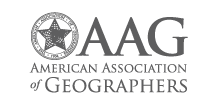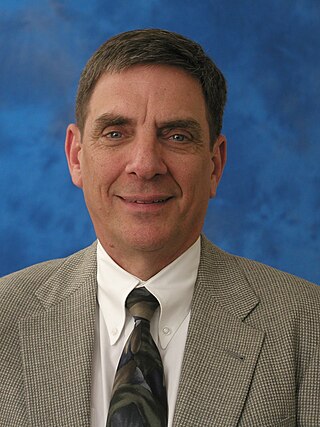Related Research Articles

The physiographic regions of the contiguous United States comprise 8 divisions, 25 provinces, and 85 sections. The system dates to Nevin Fenneman's report Physiographic Divisions of the United States, published in 1916. The map was updated and republished by the Association of American Geographers in 1928. The map was adopted by the United States Geological Survey by publication in 1946.

Waldo Rudolph Tobler was an American-Swiss geographer and cartographer. Tobler is regarded as one of the most influential geographers and cartographers of the late 20th century and early 21st century. He is most well known for coining what has come to be referred to as Tobler's first law of geography. He also coined what has come to be referred to as Tobler's second law of geography.
Carl Ortwin Sauer was an American geographer. Sauer was a professor of geography at the University of California at Berkeley from 1923 until becoming professor emeritus in 1957. He has been called "the dean of American historical geography" and he was instrumental in the early development of the geography graduate school at Berkeley. One of his best known works was Agricultural Origins and Dispersals (1952). In 1927, Carl Sauer wrote the article "Recent Developments in Cultural Geography," which considered how cultural landscapes are made up of "the forms superimposed on the physical landscape."

Ellen Churchill Semple was an American geographer and the first female president of the Association of American Geographers. She contributed significantly to the early development of the discipline of geography in the United States, particularly studies of human geography. She is most closely associated with work in anthropogeography and environmentalism, and the debate about "environmental determinism".

The American Association of Geographers (AAG) is a non-profit scientific and educational society aimed at advancing the understanding, study, and importance of geography and related fields. Its headquarters is located in Washington, D.C. The organization was founded on December 29, 1904, in Philadelphia, as the Association of American Geographers, with the American Society of Professional Geographers later amalgamating into it in December 1948 in Madison, Wisconsin. As of 2020, the association has more than 10,000 members, from nearly 100 countries. AAG members are geographers and related professionals who work in the public, private, and academic sectors.
Latin American studies (LAS) is an academic and research field associated with the study of Latin America. The interdisciplinary study is a subfield of area studies, and can be composed of numerous disciplines such as economics, sociology, history, international relations, political science, geography, cultural studies, gender studies, and literature.
Mark Stephen Monmonier is a Distinguished Professor of Geography and the Environment at the Maxwell School of Citizenship and Public Affairs of Syracuse University. He specializes in toponymy, geography, and geographic information systems.
Donald William Meinig was an American geographer. He was Maxwell Research Professor Emeritus of Geography at the Maxwell School of Citizenship and Public Affairs, Syracuse University.

Karl W. Butzer was a German-born American geographer, ecologist, and archaeologist. He received two degrees at McGill University, Montreal: the B.Sc. (hons) in Mathematics in 1954 and later his master's degree in Meteorology and Geography. Afterwards in the 1950s he returned to Germany to the University of Bonn to obtain a doctorate in physical geography. He obtained a master's degree in Meteorology and Geography from McGill University and a doctorate in physical geography from the University of Bonn in Germany.

George Babcock Cressey was an American geographer, author, and academic. Born in Tiffin, Ohio, he attended Denison University and then the University of Chicago, where he received a PhD in geology. After receiving his degree, he taught at University of Shanghai and traveled widely in China. Upon his return to the United States in 1929, he completed a pioneering book on the country, China's Geographic Foundations.
Geographers on Film is an archival collection and series of more than 550 filmed interviews with experts of the geographic scholar community. This is a 40 year long initiative.

William E. Doolittle is an American geographer who is prominent among the fourth generation of the Berkeley School of Latin Americanist Geography. He is currently the Erich W. Zimmermann Regents Professor in Geography at the Department of Geography and the Environment at University of Texas at Austin. He specializes in landscapes and agricultural technology in the American Southwest and Mexico.
Andrew Sluyter is an American social scientist who currently teaches as a professor in the Geography and Anthropology Department of the Louisiana State University in Baton Rouge. His interests are the environmental history and historical, cultural, and political ecology of the colonization of the Americas. He has made various contributions to the theorization of colonialism and landscape, the critique of neo-environmental determinism, to understanding pre-colonial and colonial agriculture and environmental change in Mexico, to revealing African contributions to establishing cattle ranching in the Americas, and to the historical geographies of Hispanics and Latinos in New Orleans. With the publication of Black Ranching Frontiers: African Cattle Herders of the Atlantic World, 1500–1900 and a 2012–13 Digital Innovation Fellowship from the American Council of Learned Societies, he has joined a growing number of scholars from multiple disciplines working from the perspective of Atlantic History and using the tools of the Digital Humanities. His latest book, Hispanic and Latino New Orleans: Immigration and Identity since the Eighteenth Century, co-authored with Case Watkins, James Chaney, and Annie M. Gibson, was awarded the 2015 John Brinckerhoff Jackson Book Prize by the American Association of Geographers.
The Berkeley School of Latin Americanist Geography was founded by the American geographer Carl O. Sauer. Sauer was a professor of geography at the University of California at Berkeley from 1923 until becoming professor emeritus in 1957 and was instrumental in the early development of the geography graduate program at Berkeley and the discipline of geography in the United States. Each generation of this research school has pursued new theoretical and methodological approaches, but their study of the peoples and places of Latin America and the Caribbean has remained the common denominator since the early 20th century. Carl O. Sauer himself did not develop a particular interest in Latin America before 1925, when Oskar Schmieder, a German geographer, disciple of Alfred Hettner, and expert in Latin American regional geography, arrived at Berkeley, coming from Córdoba, Argentina, to work as an associate professor. Obviously, his interest awoke during Schmieder's presence between 1925 and 1930. After Schmieder's departure in 1930, Carl O. Sauer began to offer seminars on the regional geography of Latin America.
The Conference of Latin Americanist Geographers (CLAG) was formed in 1970 to foster geographic education and research on Latin America. A board of directors governs CLAG. CLAG publishes a Newsletter and the Journal of Latin American Geography. It also operates CLAGNET, an electronic Listserv for members.

Anne Buttimer was an Irish geographer. She was emeritus professor of geography at University College, Dublin.

The Department of Geography in the College of Arts & Sciences at the University of Kentucky offers undergraduate degrees and graduate degrees and courses in physical and human geography. The department has an international reputation for the study of social theory and critical geography, including political ecology. Located in Lexington, Kentucky, the department is consistently ranked among leading geography graduate programs in the United States. The graduate students have organized the annual international conference, Dimensions of Political Ecology or DOPE, since 2010. In the summer of 2012, the department and faculty offices moved to the eighth floor of Patterson Office Tower.

Fred Bowerman Kniffen was an American geographer and distinguished professor in the Department of Geography and Anthropology at Louisiana State University for over 64 years. Kniffen had a background in anthropology, geography, and geology when he arrived at Louisiana State University in the late 1920s. While there, he made great strides in the Department of Geography and Anthropology that led to the development of new research areas, additional courses, and well trained graduate students. Kniffen stressed the importance of learning and understanding the history of geography, along with blending physical geography and anthropology with cultural geography. During Kniffen's time at Louisiana State University, he was an advocate for interdisciplinary research. Kniffen became a distinguished professor in the department in 1966, later becoming Boyd professor in 1967.
Oskar Schmieder was a German geographer and expert in the regional geography of Latin America. He spent his early career with Carl O. Sauer at the University of California at Berkeley, where he was an Associate Professor from 1926 to 1930.
John Fraser Hart is an American geographer. Over the course of his career he published over 150 scholarly papers, over a dozen books, and taught over 50,000 university students in his 65 years of teaching from 1949 until his retirement in 2015.
References
- ↑ Martin, Geoffrey J. (1988). "Preston E. James, 1899–1986". Annals of the Association of American Geographers. 78 (1): 164–175. doi:10.1111/j.1467-8306.1988.tb00201.x. ISSN 0004-5608. JSTOR 2563450.
- 1 2 3 4 Jensen, Robert G. (1986). "Preston Everett James, 1899-1986". Journal of Geography. 85 (6): 273–274. Bibcode:1986JGeog..85..273J. doi:10.1080/00221348608979430. ISSN 0022-1341. ProQuest 1290540886.
- ↑ "Presentation of the Society's Medals". Geographical Review. 57 (2): 241–245. 1967. ISSN 0016-7428. JSTOR 213162.
- ↑ "Medals and Awards". Royal Geographical Society . Retrieved 2023-05-29.
- ↑ "Presidents of the AAG". AAG . Retrieved 2023-05-29.
- ↑ Morey, Lillian B. (ed.). Geography at Syracuse 1967. p. 5.
In August 1966, Dr. James was honorary president of the Association of American Geographers and gave the annual presidential address at the banquet in Toronto.
- ↑ "Preston E. James Eminent Latin Americanist Career Award". CLAG . Retrieved 2023-05-29.
- 1 2 James, Preston E. Preston E. James Papers. Syracuse University Libraries.
- ↑ Barnes, Trevor J. (2016). "American Geographers and World War II: Spies, Teachers, and Occupiers". Annals of the American Association of Geographers. 106 (3): 543–550. Bibcode:2016AAAG..106..543B. doi:10.1080/24694452.2016.1145513. ISSN 2469-4452. JSTOR 45387626.
- ↑ "James, Preston". The Great Soviet Encyclopedia (3rd ed.). 1979 – via TheFreeDictionary.com.
- ↑ "Geography at Syracuse University". Science. 102 (2644): 218. 1945-08-31. doi:10.1126/science.102.2644.218.a. ISSN 0036-8075. PMID 17778505.
- ↑ "Preston E. James". Britannica (Contributor). Retrieved 2023-05-29.
- ↑ Hall, John Whitney (1952). "News of the Profession". The Far Eastern Quarterly. 11 (2): 287–294. ISSN 0363-6917. JSTOR 2049405.
- ↑ "The Monadnock" (PDF). Monadnock. xxxvii: 13–24. 1963.
- ↑ James, Preston E. (1974). "The Southern Studies Project: A Paragraph in the History of American Geography". Southeastern Geographer. 14 (1): 1–6. doi:10.1353/sgo.1974.0011. ISSN 1549-6929.
- ↑ "MR. MELVIN F.CLEMENS, JR". The Florida Geographer. 9 (1): 3–4. February 1973.
- ↑ Rollins College Office of Marketing and Communications (1965). "Rollins Alumni Record, June 1965". Rollins Magazine.
- ↑ "Geography in the Bluegrass Day". University of Kentucky College of Arts & Sciences. University of Kentucky . Retrieved 2023-05-29.
- ↑ Morey, Lillian B. (ed.). Geography at Syracuse 1967. p. 5.
In May he was awarded an honorary Doctor of Science degree from Eastern Michigan University at Ypsilanti.
- ↑ James, Preston (May 11, 1967). "Population Growth & Starvation" (Honors Convocation). Eastern Michigan University. Program . Retrieved 2023-05-29– via Eastern Michigan University Archives.